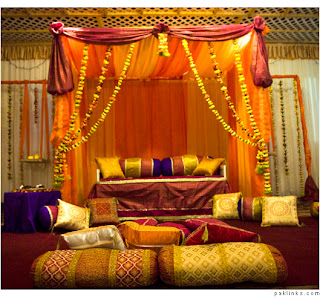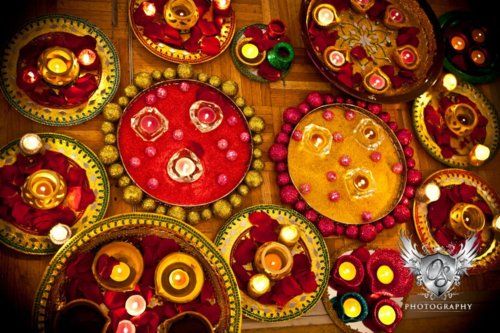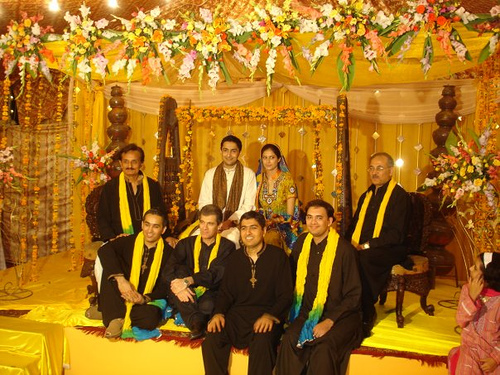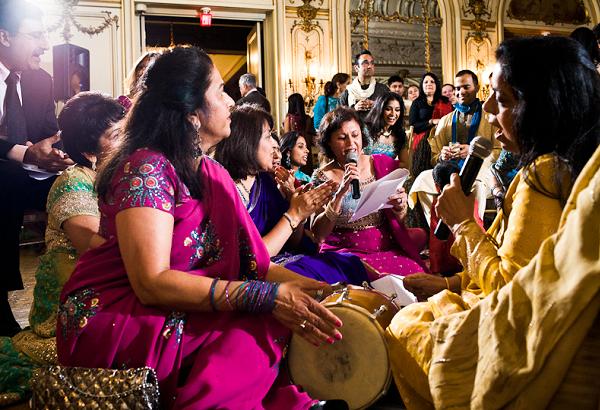
Mehndi (Urdu: مہندی), the Henna ceremony, or the Rasm-e-henna ceremony, typically takes place one or two days prior to the main wedding day. The event is traditionally held separately for the bride and the groom. The henna is symbolically placed on the couple's hands. The groom's friends and family bring along sweets and henna for the bride, and the bride's family does the same for the groom. In the bride's ceremony, the groom normally does not participate, and similarly on the groom's event, the bride stays at home. Female guests are sometimes offered mehndi at the host's discretion.

Traditionally, since there were separate functions for both the bride and the groom, the groom's function was called 'Tael' (oil) where female guests put some oil into the groom's hair. With the ceremony now held simultaneously for both the groom and the bride, the use of the term 'tael' has diminished greatly. In some cases, the entire ceremony is instead referred to as "Tael Mehndi" (Oil and Henna) ceremony.

The bride normally wears a green dress or yellows/orange for the Henna celebration and uses only light, or mostly, no make-up. The groom will typically wear a casual Shalwar Qameez. The bride and/or the groom are brought forward in the ceremony under a decorative dupatta by their close relatives. In the bridal ceremony, a certain number of married women who are closely related to the bride apply henna to her hands, and feed her sweets. This ritual is supposed to bring good luck and longevity to the bride's married life. Similarly, on the groom's side, oil is applied to his head and sweets are fed to the groom.

A song competition also occurs in the Rasme Henna or Mehndi celebrations between the bride and groom's side. Young women and men will sing teasing songs about the other side (where the bride's side pokes good natured fun at the groom's side and vice versa) and try to compete in this ritual sing song. Sometimes elaborate musical and acting performances are part of the Mehndi celebrations. Elaborate dance sequences and competitions between the bride and groom's families are also quite common these days.

Traditionally, the Mehendi was considered a women's event and men did not participate in it. The sing song etc. was left almost entirely to women. However, this has changed substantially in recent times with males featuring prominently in the Mehndi celebrations as well. A recent trend gaining popularity is to announce a color theme for the mehendi whereby guests are supposed to dress up in a particular color. Commonly used colors are bright reds, oranges and yellows. In some communities, the groom's mehndi traditionally features a dress code of green while the bride's requires yellow.

The Dholki or Dholak (Urdu: ڈھولکی) celebration takes its name from the percussion instrument Dholki, which is featured heavily during this wedding celebration. Traditionally, many days or even weeks before the actual wedding day, women will gather in the house of the bride at night to sing and dance while accompanied by percussion instruments. Today, this ceremony has also been reduced to a single night of singing and is often combined with Mehndi or Henna ceremony.




